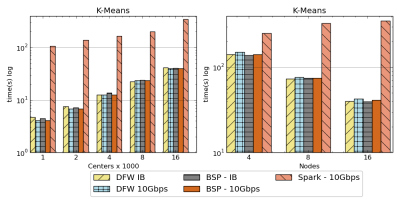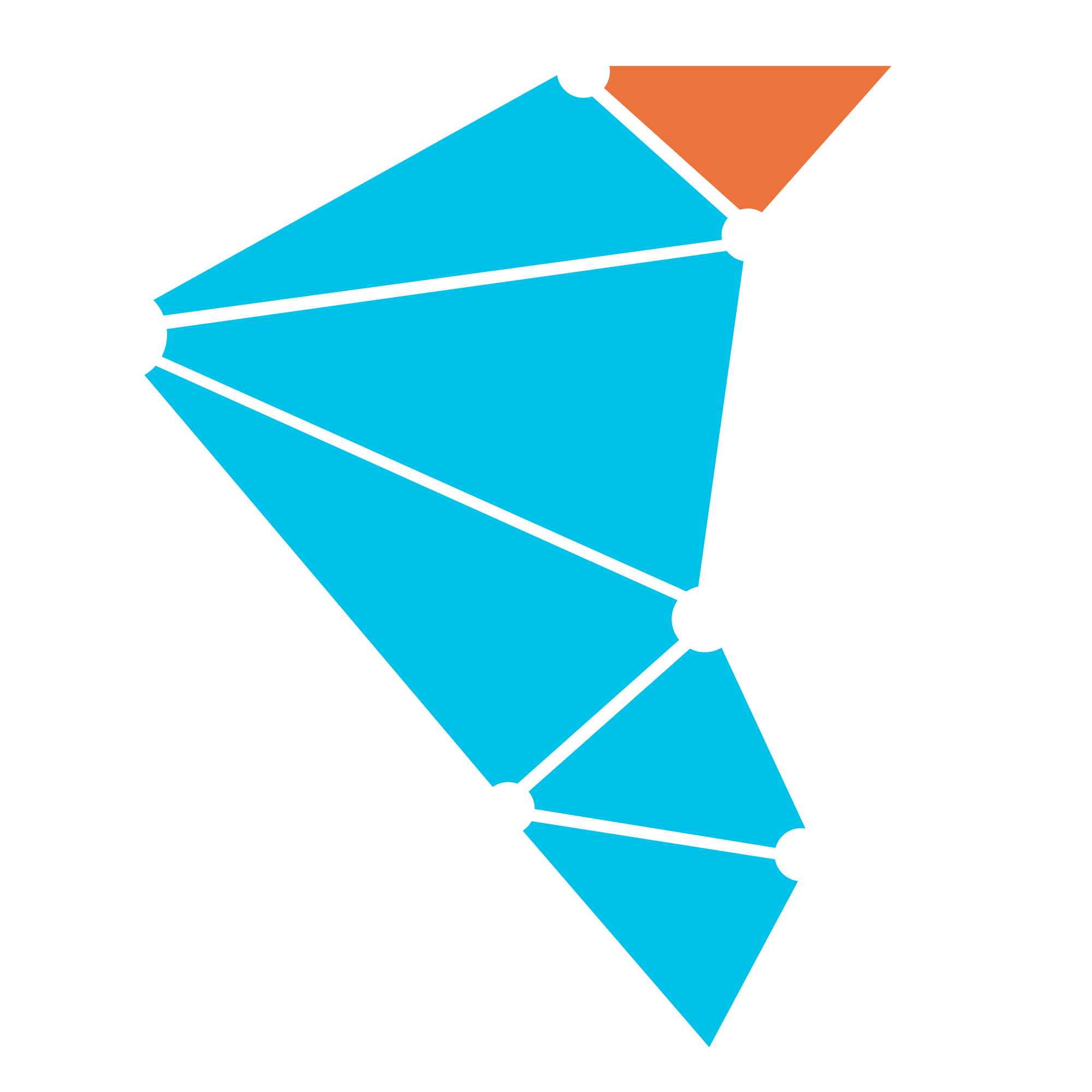Operator API
This is the lowest level of API provided by Twister2. It provides the basic parallel operators required by a parallel programs in terms of both Bulk Synchronous Parallel (BSP) and DataFlow API.
The BSP APIs are provided by Harp and MPI specification (OpenMPI).
The DataFlow operators are implemented by Twister2 as a Twister:Net library.
We will focus on the DataFlow operators in this guide as Harp API's and MPI APIs are discussed in their own documentation.
DataFlow Operator Overview
Twister2 dataflow operators are designed as asynchronous operators with state.
Every operator needs a LogicalPlan, a Communicator and set of sources and set of targets.
LogicalPlan gives the mapping from set of ids to workers processes. These logical ids are
used by sources and targets. An operator can have sources in one set of processes
and targets in another set of processes. Depending on the operator, there source set of target
set can have one or more logical ids.
The communicator encapsulates the underlying channel that is being used for network data transfer.
At the moment Twister:Net supports MPI based and TCP socket based implementations.
An Example Operator
Lets look at an example operator. For this example we have chosen the batch Reduce operator. This operator can have many sources and only one target.
Input to the operator can be any data type. All the sources input data and these values are reduced to a single value at the target. How to reduce multiple values to a single value is defined by a user defined function.
LogicalPlanBuilder logicalPlanBuilder = LogicalPlanBuilder.plan(
3, // 3 sources
3, // 3 targets
workerEnv
).withFairDistribution();
// setup the batch operation
BReduce reduce = new BReduce(communicator, logicalPlanBuilder,
reduceFunction, reduceReceiver, datatype);
// send the data
reduce.reduce(task, data, flag);
// lets call finish, every source need to call finish, in this example
// we assume one source in a single worker
reduce.finish(source);
// wait while operator completes
while (!reduce.isComplete()) {
reduce.progressChannel();
}
After every participating source sends its data and calls finish, the final values will be received to the user defined reduceReceiver. At this point, the operation will be complete and the while loop at the end will exit.
We can call reduce.reduce multiple times.
Streaming & Batch Operators
There are separate set of streaming operators and batch operators. The streaming operators never end
while batch operators have an end. Otherwise their programming is similar. So in our example above
we won't have the finish call and isComplete will never be true for a streaming
operator.
For batch operators user needs to indicate the end by using a special flag or a method.
Termination & Progress
The operator library doesn't created its own threads. So, unless user calls some function in the library,
nothing will automatically happen. The progression of the operator is done using the
progress and progressChannel methods. Unless these methods are called, data will
not go through the network.
The data accepting functions of the operators can return true or false depending
on weather they accept the data or not. If the method doesn't accept data, that means the internal
data structures are full and user needs to call the progressChannel method to send the data to
its targets. User doesn't need to wait until the method returns false to call the progression
methods.
Batch Operators
The table below describes the batch operators supported by Twister2 and their semantics.
| Operator | Description | Class |
|---|---|---|
| Reduce | Reduces a set of values into a single value with a user defined function. | edu.iu.dsc.tws.comms.batch.BReduce |
| AllReduce | Reduces a set of values into a single value with a user defined function and broadcast it to all the targets | edu.iu.dsc.tws.comms.batch.BAllReduce |
| Gather | Gathers values from all sources and give it to a single target, optionally can use the disk to do large gathers that doesn't fit into memory | edu.iu.dsc.tws.comms.batch.BGather |
| AllGather | Gathers values from all sources and broadcast it to all the targets, optionally can use the disk to do large gathers that doesn't fit into memory | edu.iu.dsc.tws.comms.batch.BAllGather |
| Broadcast | Broadcast a value from a single source to multiple targets | edu.iu.dsc.tws.comms.batch.BBroadcast |
| Direct | A peer to peer communication between set of sources and targets, each source is matched to a single target | edu.iu.dsc.tws.comms.batch.BDirect |
| KeyedReduce | Reduce based on a key specified by the user. Values with the same key are reduced together | edu.iu.dsc.tws.comms.batch.BKeyedReduce |
| KeyedGather | Gather based on a key specified by the user. Values with the same key are gathered together | edu.iu.dsc.tws.comms.batch.BKeyedGather |
| Join | Equi join two data sets with a given key | edu.iu.dsc.tws.comms.batch.BJoin |
| OuterJoin | Outer join two data sets with a given key | edu.iu.dsc.tws.comms.batch.BJoin |
| Left outer join | Left outer join two data sets according to a key | edu.iu.dsc.tws.comms.batch.BJoin |
| Right outer join | Rigght outer join two data sets according to a key | edu.iu.dsc.tws.comms.batch.BJoin |
| Partition | Redistributes data according to a user criteria | edu.iu.dsc.tws.comms.batch.BPartition |
Streaming Operators
The table below describes the streaming operators supported by Twister2 and their semantics.
| Operator | Description | Class |
|---|---|---|
| Reduce | Reduces a set of values into a single value with a user defined function. | edu.iu.dsc.tws.comms.stream.SReduce |
| AllReduce | Reduces a set of values into a single value with a user defined function and broadcast it to all the targets | edu.iu.dsc.tws.comms.stream.SAllReduce |
| Gather | Gathers values from all sources and give it to a single target, optionally can use the disk to do large gathers that doesn't fit into memory | edu.iu.dsc.tws.comms.stream.SGather |
| AllGather | Gathers values from all sources and broadcast it to all the targets, optionally can use the disk to do large gathers that doesn't fit into memory | edu.iu.dsc.tws.comms.stream.SAllGather |
| Broadcast | Broadcast a value from a single source to multiple targets | edu.iu.dsc.tws.comms.stream.SBroadcast |
| Direct | A peer to peer communication between set of sources and targets, each source is matched to a single target | edu.iu.dsc.tws.comms.stream.SDirect |
| Partition | Redistributes data according to a user criteria | edu.iu.dsc.tws.comms.stream.SPartition |
Disk Based Operators
Some operators can be configured to use the disk in-order to support large data sets. Only batch operators support this mode. Join operations and KeyedGather operators can use the disk to do large data operations.
High performance communication layer
Because of the bottom up approach taken when designing and implementing Twister2 the communication layer performs extremely well. A complete study on the Twister2 communication layer can be found at Twister2:Net.
The image below which is extracted from Twister2:Net shows how Twister2 performs against Apache Spark and MPI. Please note that Spark KMeans example is written using the data level API while Twister2 and MPI implementations are communication level applications. However it is clear that Twister2 performs on the same level as OpenMPI which is an highly optimized communication library in the HPC world. And it out performs Spark by roughly a factor of x10.

Notation :
DFW refers to Twister2
BSP refers to MPI (OpenMPI)
